Genre: Sports Developer: Tengen Publisher: Tengen Players: 1-2 Released: 1992
Tengen’s R.B.I. Baseball series was never the flashiest franchise. It’s neither pretty enough for graphics junkies nor meticulous enough for moneyball types. But with straightforward controls, a roster of real-life players, and a lighthearted atmosphere, it’s always been a solid choice for gamers who want arcade-style baseball action. The Genesis has four games in the R.B.I. series plus a fifth on the 32X, so baseball fans are spoiled for choice, but as we all know, the console’s sports library is plagued with meaningless rehashes that offer little more than roster updates. So does R.B.I. Baseball 4 refine and improve upon its predecessors, or is it just another retread?
R.B.I. Baseball 4 offers the typical exhibition and two-player options, as well as a home run derby, a “Game Breakers” mode with 17 scenarios that distill a game down to its tensest moments, and a stadium tour mode that lets you survey the ballparks of North America. The real meat, however, is in the longer, password-based season modes in which you either play all the teams in your division, or take on every single one of the 60+ teams in the game. After choosing one of three difficulty levels, your mission is to defeat all of your opponents and, if you’ve got a perfect record at season’s end, then take on the not-so-secret super Tengen team for ultimate victory.
R.B.I. Baseball 4 is “an official licensee of the Major League Baseball Players Association,” and features a full complement of active players from 1991, plus all of the division winners from 1983 through 1990 and All-Star teams from 1989-1991. The players are licensed and their rosters and stats are historically accurate, but the actual team names are never explicitly used, and many of the historical teams have had much of their lineups replaced with generic players (no doubt for licensing reasons).
When you first come up to bat in R.B.I. Baseball 4, you’ll immediately notice the graphical updates over its predecessor. Now, World Series Baseball this ain’t, and the player sprites are still relatively small, but the game’s animation and use of color have been considerably improved. The pitching and hitting controls are basically unchanged, so anyone who’s played an earlier R.B.I. game can pick it right up, but like other games in the series, there aren’t a lot of options. Batters can swing or bunt, pitchers have a few different pitches… and that’s pretty much it. (At least you get a spitball.) There’s not a lot of nuance or personality on display, and their names, statistics, and skin color are practically the only way to tell different players apart. And despite all the detailed player stats that the manual supplies, they really don’t seem to influence gameplay very much.
Pitcher stamina is as opaque as it was in R.B.I. Baseball 3, and though the game claims you can preserve a pitcher’s strength by throwing more change-ups, in practice most pitchers won’t last more than three to four innings without starting to go downhill fast. You can only change pitchers up to four times during the game, and the CPU is sometimes trigger-happy about bringing in relief, so a clever player can work the count and force the opposing team to finish the game with an exhausted pitcher. Strangely, even when the CPU is throwing at 50 MPH it doesn’t seem any easier to hit a big ball, and I often had better luck against a fading pitcher than one with a dead arm. (By the way, either team can substitute a pitcher or batter midway through an at-bat, which is apparently legal – who knew? – but still disconcerting.)
The CPU is generally a solid hitter, but as in R.B.I. Baseball 3, the opposing pitcher can often collect strikeouts by repeatedly throwing fast and inside. Still, the CPU can be dangerous, and will occasionally turn a team into ‘roid-rage monsters who seem to blast everything you throw at them. (In my case, it was Detroit 1987 who abruptly went into beast mode against my Boston team, hammering five or six home runs in one game.)
When pitching, however, the CPU is very erratic. Sometimes it’s lethally effective, and sometimes it’ll bean three batters in a row or throw a string of walks for no apparent reason. I’ve picked up two or three consecutive unearned runs without swinging my bat, just by letting the CPU’s pitcher commit suicide.
Base running works well, but one major annoyance is that you have to manually tell your players to go back to base on fly balls. By default, they’ll run on everything. That might be justifiable on fair balls (though the “hover near the base and retreat on catch” method used by other games is better), but on obvious foul balls it’s an absurdity. If you hit a short fly ball behind home plate and remember too late to hit the C button and sound the retreat, you’re liable to curse a blue streak once your men on first and second get thrown out.
When it comes to fielding, the computer’s approach is quirky, to put it mildly. Fielders will sometimes stand still until the ball stops moving, which doesn’t affect long balls much but makes bunts surprisingly effective. Even on the highest difficulty setting, the CPU sometimes makes poor decisions when fielding, and will try to throw out a runner who’s on the verge of taking second or third even if there are two outs and an easy throw to first base would end the inning.
Worst of all, the CPU doesn’t seem to understand the concept of a rundown or “pickle,” where a runner caught between bases is trapped in a vise of opposing fielders and tagged out. Instead, it simply throws to the highest-numbered base that’s at risk, and sits tight. Because of this, the player can retreat from almost any awkward base-running situation, and can also manipulate the CPU in all kinds of weird ways. For example, if you have runners on first and third, and feint at sending the lead man home, the CPU will throw the ball to home plate and hold it, letting you steal second base without resistance. With the bases loaded, you can have the man on second waltz right up to the edge of third, and the computer won’t do a thing!
Some of these AI flaws were present in R.B.I. Baseball 3, and it’s none too impressive that they’re still here. For the player, however, fielding in R.B.I. Baseball 4 has been considerably improved. The earlier game featured a zoomed-out perspective, with completely manual control that led to awkward errors, and graphics that were of NES caliber (at best). R.B.I. Baseball 4‘s zoomed-in view certainly looks much more polished, with better-looking sprites for fielders and base runners (even if all the players’ skin tones have mysteriously become the same shade of brown).
More importantly, R.B.I. Baseball 4 now implements a partial automatic control scheme: players who are fully onscreen are under manual control, while players who are off-screen move automatically (but can be manually overridden). This works very well, ensuring some degree of skill goes into fielding, but without the frustrations of manual control. Since off-screen fielders seem to move a bit faster when you take control, the game rewards you for developing a sense of your fielders’ positions and being able to anticipate the path of a fast-moving grounder.
Another nice touch is the announcer, who makes himself useful by differentiating between fly balls and ground balls — something that’s very helpful when you’re trying to make a quick decision, whether you’re fielding or at bat. His utterances are brief and to the point, and mercifully devoid of the robotic “color commentary” that plagues games like HardBall III. On the other hand, the short animations that play after certain in-game events are better turned off, the in-game music is inoffensive but forgettable, and the crowd noises have obvious and distracting loop points.
Overall R.B.I. Baseball 4 is a solid entry in the series, but no more than that. It’s a notch above its predecessor, but also inherits some of that game’s unfixed flaws. If you’re looking for realism or depth you won’t find it here, but if you want a quick game against the CPU or an extended campaign with your favorite players at the helm, you could do far worse.
SCORE: 6 out of 10

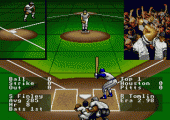
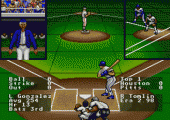
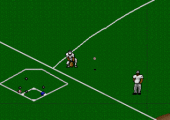
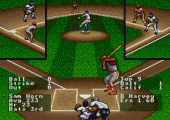
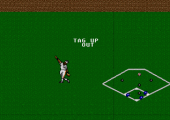
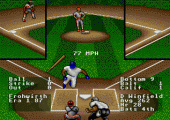
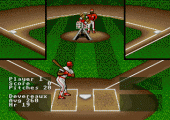
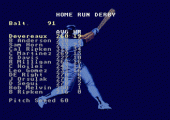
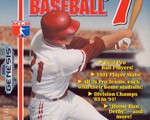
Recent Comments